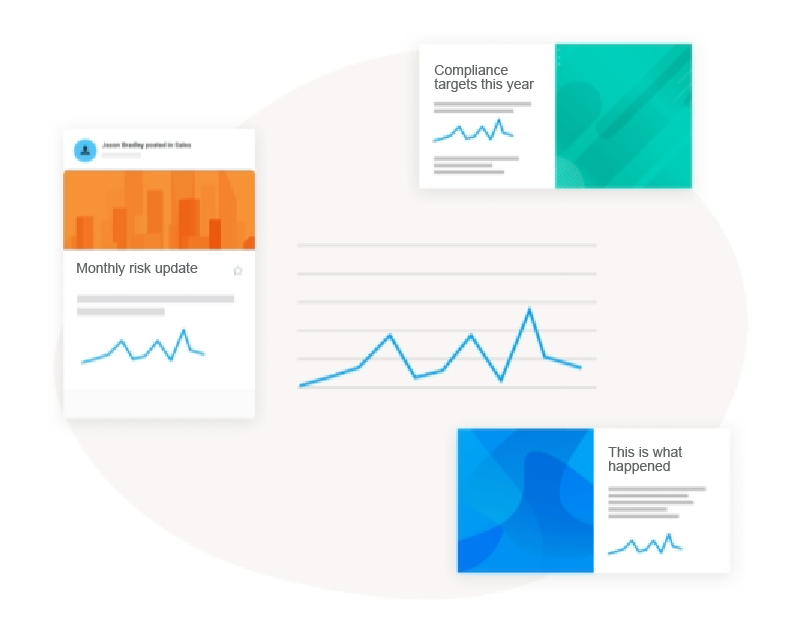Analytic solutions can help answer the 'why' behind the 'what'. They can help everyone in the organisation be aligned with what is happening and understand why it is happening. This gives everyone a chance to figure out what they need to do to meet their individual and organisational goals.
Data is at the core of understanding the 'why'. But numbers in a report or abstract charts and graphs are often not enough to give a complete picture or a deeper understanding of what's going on in the organisation.
This is where data storytelling comes in. Stories are always powerful, and stories based on data are the superpower you need to build a data-driven culture with a deep understanding of data.
Data storytelling capability helps you provide a context and build more accountability for the results.
Operational reports and dashboards have always been the instruments to convey everything that's happening at the organisation. But interpreting these reports in the light of organisation-specific context is complex at best.
Data storytelling presents a way to take the data and bring more meaning to it in a way that's easy to understand. A narrative has to be built around the data and that's the skill you need for effective data storytelling.
The two types of Storytelling
There are two types of data storytelling.
The first type of storytelling involves the standard reports. They tell what is happening daily, weekly, monthly, or quarterly. These regular reports contain data that you analyse to understand the business context in terms of the changes in data (trends or patterns) that you see.
This kind of data analysis helps to clearly understand what's happening and the reason for it. It can also give you insights on making improvements to what's happening in the organisation.
To help you form patterns and trends, the regular reports should follow a set template. This helps in comparing the data points. Data points from different time periods can be considered in the light of any changes or updates in business and operations to understand how these metrics were arrived at.
The approach of data storytelling through standard reports helps to plan for improvement based on the data points from the past. It helps everyone involved in understanding what they need to do to improve. It is an approach that is based on transparency and honesty in data and its analysis.

The second type of data storytelling comes into the picture when you want to use data to convince people to take action. It also includes data-backed decision-making. It provides the justification for every decision, action, and approach.
These data stories are not in reports. Instead, they appear as influencing stories in emails, conversations, and presentations. They don't follow the standardised approach of reports and use the data directly from it.
Instead, these stories look at data from a broader perspective. It uses a reverse approach where you first focus on the results you want and then go back to the data to support your plan of action to get the results.
But taking a non-standardised approach does not mean that you can let ambiguity or uncertainty come in. The story around the data still needs to be exact, credible, and viable. It also needs to be ensured that the story does not conflict with any other data points.
This second approach to storytelling can be thought of as three parts of the story. In the first part, you define the results you want to get. The second part builds on it by including supporting data justifying the viability and usefulness of the results. The third part is about outlining the actions that need to be taken, supported by the data, to achieve the results.
A culture of data storytelling
The best way to foster a culture of data storytelling is for the senior management to model the behaviour themselves and encourage everyone else to follow suit. So, for example, when you build a business strategy backed by data, let the data story drive execution. Involve people in the strategy and in the data story that is at its core. Justify your strategy and recommendations.
By doing this, you not only make better decisions, you also empower people by making them a part of the strategy and its execution, backed by data and not just instruction.
When there are people who are involved in creating reports, it helps to give them some direction as to which reports they need to create and the format for these reports. Helping them understand the bigger picture can allow them to create data stories that bring considerable value to the business.
A holistic and inclusive approach to achieving an organisation's goals is to be able to develop a culture of data storytelling. This approach is not based on the opinions of a chosen few in the top management. Rather, it is a collective effort that takes ideas forward by drawing on data points to support the effort and the vision.
LiveDocs helps in data storytelling by integrating with the 6clicks platform and helping you create narratives around data that are accurate, timely, and effective.
Written by Dr. Heather Buker
Heather has been a technical SME in the cybersecurity field her entire career from developing cybersecurity software to consulting, service delivery, architecting, and product management across most industry verticals. An engineer by trade, Heather specializes in translating business needs and facilitating solutions to complex cyber and GRC use cases with technology. Heather has a Bachelors in Computer Engineering, Masters in Engineering Management, and a Doctorate in Information Technology with a specialization in information assurance and cybersecurity.







